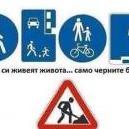Генетичен анализ на готите... или реквием за автохтонските фантазии
-
Теми
-
- 56 мнения
- 3080 views
-
Руско-украинската война 2022-2024 година. 1 2 3 4 41
От Р. Теодосиев, in Руско-украинската война 2022 година.
- 1023 мнения
- 40107 views
-
Световната икономика вече е ангажирана с намаляване на доходите с 19% поради климатичните промени
От Р. Теодосиев, in Икономика
- 0 мнения
- 48 views
-
Япония се сдоби със самолетоносач за пръв път от края на Втората световна война
От Р. Теодосиев, in Военно дело
- 3 мнения
- 71 views
-
- 30 мнения
- 1063 views
-
-
Последно разглеждащи 0 Потребители
- No registered users viewing this page.




Recommended Posts
Напиши мнение
Може да публикувате сега и да се регистрирате по-късно. Ако вече имате акаунт, влезте от ТУК , за да публикувате.